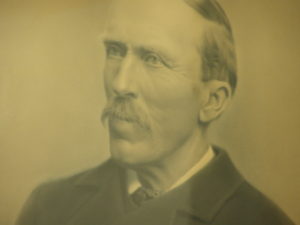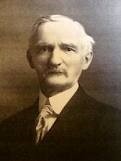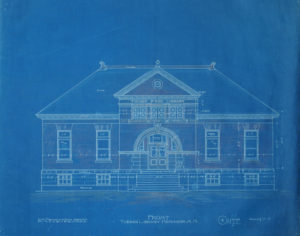 When the residents of Henniker voted to accept the gift of George Tucker at the 1903 Town Meeting, they formed not only a Board of Trustees to oversee the operation of the completed library, but also a building committee to steer the planning and construction of the new facility. It has been recounted that the committee toured several different libraries in the area and all were in agreement that the preferred libraries were in Randolph, VT (Kimball Public Library) and in Jaffrey, NH (Clay Memorial Library). Upon investigation it was discovered that both libraries were in fact designed by H.M. Francis of Fitchburg, MA. The building committee then contacted Francis and later hired him to design the Tucker Free Library.
When the residents of Henniker voted to accept the gift of George Tucker at the 1903 Town Meeting, they formed not only a Board of Trustees to oversee the operation of the completed library, but also a building committee to steer the planning and construction of the new facility. It has been recounted that the committee toured several different libraries in the area and all were in agreement that the preferred libraries were in Randolph, VT (Kimball Public Library) and in Jaffrey, NH (Clay Memorial Library). Upon investigation it was discovered that both libraries were in fact designed by H.M. Francis of Fitchburg, MA. The building committee then contacted Francis and later hired him to design the Tucker Free Library.
The architect, Henry Martyn Francis (1836-1908), was born in Lunenburg,MA in 1836. He assisted in  surveying for the Croton River aqueduct which supplied water to New York City. He then studied architectural drawing and served an apprenticeship under Alexander R. Estey, a Boston architect. Eight of his buildings appear on the U.S. Register of National Historic Places. Additionally, he is the documented architect of many residential homes and civic buildings in Fitchburg, MA. Francis was responsible for designing 15 libraries in Massachusetts, New Hampshire, and Vermont. These buildings were all variations of his 1884 Fitchburg library plan; each combined the design elements in a unique way. Like many Victorian architects, Francis was influenced by the Romanesque style of Boston giant Henry Hobson Richardson, reflected in round arches over the deeply recessed doorway and above the column-sided windows, rough-faced stone contrasting with horizontal bands of trim and horizontal groupings of windows.
surveying for the Croton River aqueduct which supplied water to New York City. He then studied architectural drawing and served an apprenticeship under Alexander R. Estey, a Boston architect. Eight of his buildings appear on the U.S. Register of National Historic Places. Additionally, he is the documented architect of many residential homes and civic buildings in Fitchburg, MA. Francis was responsible for designing 15 libraries in Massachusetts, New Hampshire, and Vermont. These buildings were all variations of his 1884 Fitchburg library plan; each combined the design elements in a unique way. Like many Victorian architects, Francis was influenced by the Romanesque style of Boston giant Henry Hobson Richardson, reflected in round arches over the deeply recessed doorway and above the column-sided windows, rough-faced stone contrasting with horizontal bands of trim and horizontal groupings of windows.
 The blueprint is a copy of the original architectural drawings. Additional elevations and interior floorplan drawings can be seen at the Tucker Free Library.
The blueprint is a copy of the original architectural drawings. Additional elevations and interior floorplan drawings can be seen at the Tucker Free Library.
